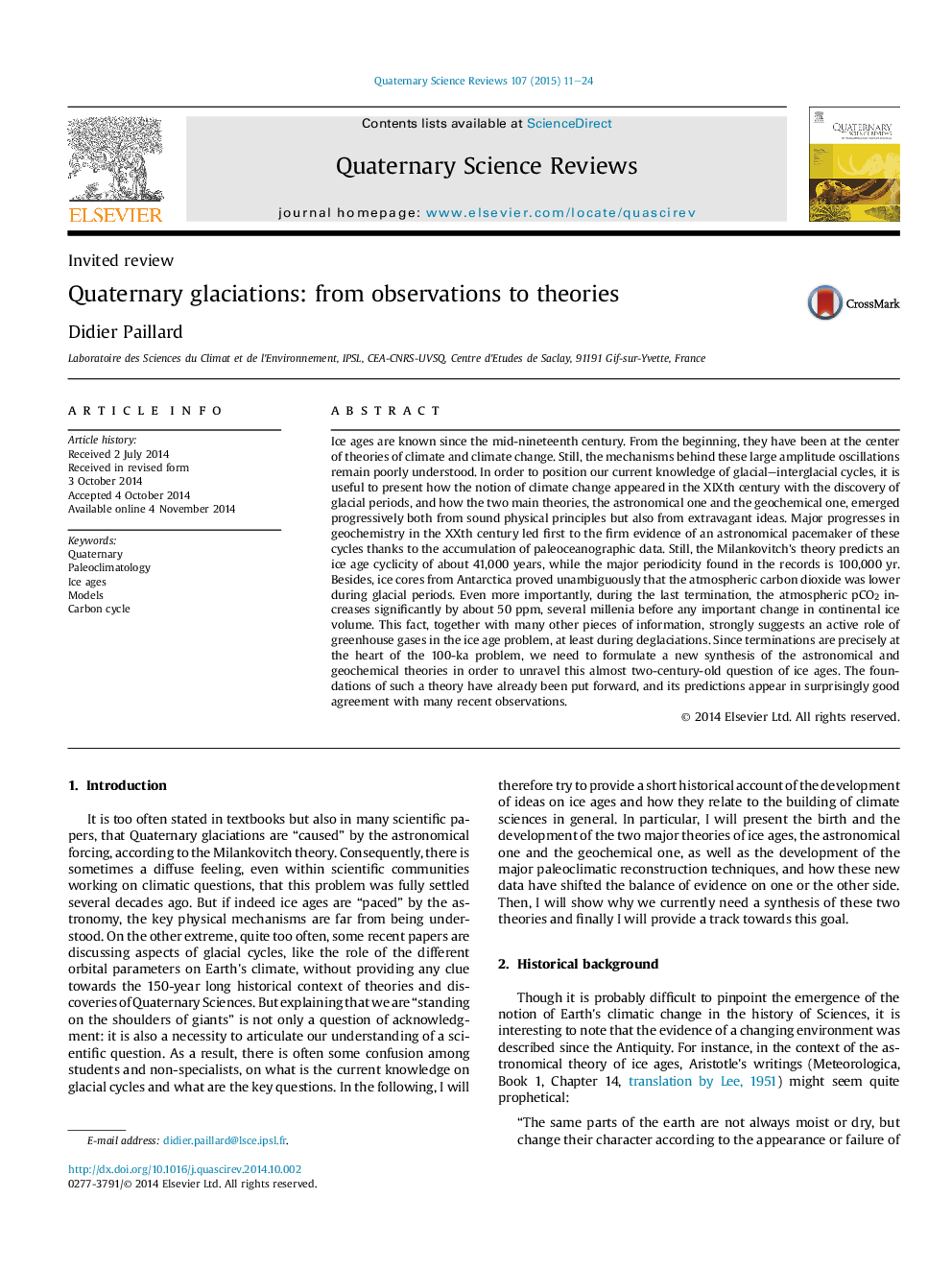| کد مقاله | کد نشریه | سال انتشار | مقاله انگلیسی | نسخه تمام متن |
|---|---|---|---|---|
| 4735993 | 1640827 | 2015 | 14 صفحه PDF | دانلود رایگان |

• The historical development of ideas on ice ages is exposed.
• The two main theories, the astronomical and the geochemical one, are detailed.
• Both mechanisms are necessary to account for the observed 100-ka cycles.
• The conceptual framework for a synthesis is exposed.
Ice ages are known since the mid-nineteenth century. From the beginning, they have been at the center of theories of climate and climate change. Still, the mechanisms behind these large amplitude oscillations remain poorly understood. In order to position our current knowledge of glacial–interglacial cycles, it is useful to present how the notion of climate change appeared in the XIXth century with the discovery of glacial periods, and how the two main theories, the astronomical one and the geochemical one, emerged progressively both from sound physical principles but also from extravagant ideas. Major progresses in geochemistry in the XXth century led first to the firm evidence of an astronomical pacemaker of these cycles thanks to the accumulation of paleoceanographic data. Still, the Milankovitch's theory predicts an ice age cyclicity of about 41,000 years, while the major periodicity found in the records is 100,000 yr. Besides, ice cores from Antarctica proved unambiguously that the atmospheric carbon dioxide was lower during glacial periods. Even more importantly, during the last termination, the atmospheric pCO2 increases significantly by about 50 ppm, several millenia before any important change in continental ice volume. This fact, together with many other pieces of information, strongly suggests an active role of greenhouse gases in the ice age problem, at least during deglaciations. Since terminations are precisely at the heart of the 100-ka problem, we need to formulate a new synthesis of the astronomical and geochemical theories in order to unravel this almost two-century-old question of ice ages. The foundations of such a theory have already been put forward, and its predictions appear in surprisingly good agreement with many recent observations.
Journal: Quaternary Science Reviews - Volume 107, 1 January 2015, Pages 11–24